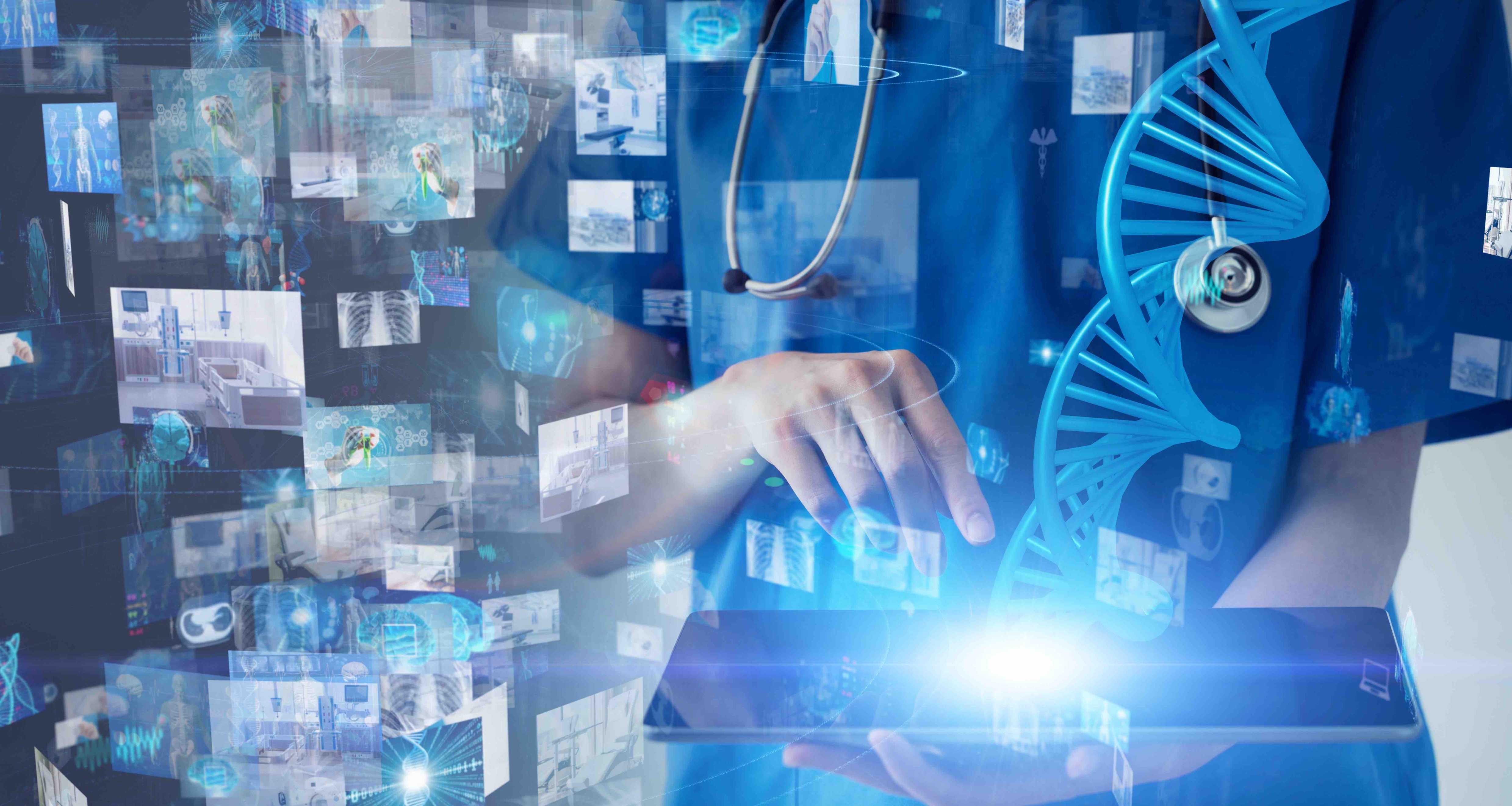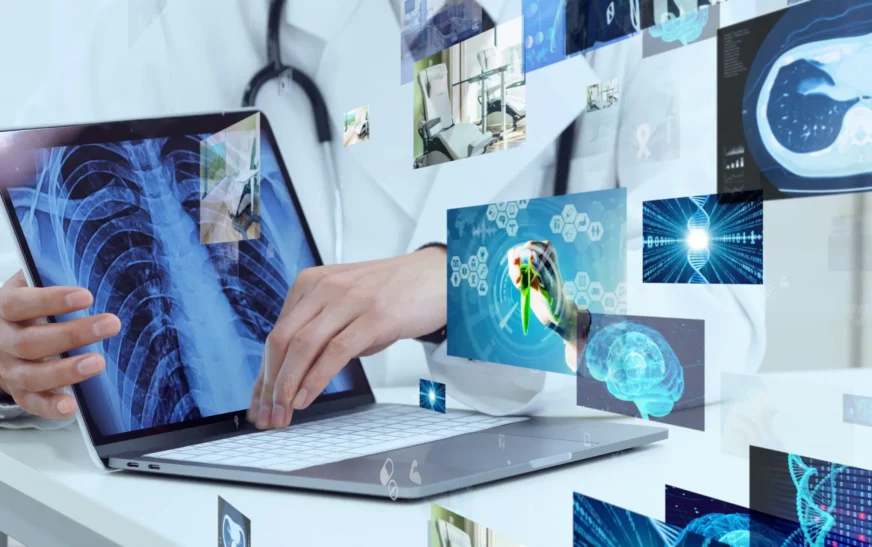Introduction to AI-Driven Medical Imaging
The world of healthcare is undergoing a revolutionary transformation, and at the forefront is AI-driven medical imaging. Imagine a future where diagnostic accuracy reaches new heights, allowing doctors to detect diseases with remarkable precision. This technology harnesses powerful algorithms that analyze images faster than any human ever could, bringing clarity to complex medical conditions.
With advancements happening at breakneck speed, it’s essential to understand how these innovations are reshaping diagnostics in our hospitals and clinics. From early disease detection to personalized treatment plans, AI’s role in medical imaging represents not just progress but a vital leap towards improved patient outcomes. Join us as we explore this exciting frontier of medicine and uncover what it means for healthcare professionals and patients alike.
Advancements in Medical Imaging Technology
The landscape of medical imaging technology is evolving rapidly. Recent advancements are transforming how professionals visualize and interpret complex medical conditions.
New imaging modalities, such as 3D mammography and functional MRI, provide deeper insights into patient health. These technologies enhance the precision of diagnostics, allowing for earlier detection of diseases like cancer.
Integration with AI algorithms further revolutionizes this field. Machine learning techniques improve image processing and analysis, leading to faster turnaround times for results. Physicians can now access more accurate images that highlight subtle abnormalities often missed by the human eye.
Moreover, portable imaging devices are making waves in remote healthcare settings. Point-of-care ultrasound machines allow practitioners to perform immediate assessments in various environments. This accessibility ensures timely interventions when patients need them most.
As these innovations continue to emerge, they pave the way for a more efficient and effective healthcare system focused on patient outcomes.
Benefits of AI-Driven Medical Imaging
AI-driven medical imaging presents a transformative leap in healthcare. One significant benefit is enhanced diagnostic accuracy. Machine learning algorithms can analyze images with remarkable precision, reducing the likelihood of human error.
Speed is another advantage. AI can process vast amounts of data rapidly, allowing for quicker diagnosis and treatment plans. This efficiency directly impacts patient outcomes.
Additionally, these systems assist radiologists by highlighting areas of concern that might be missed during manual evaluations. The technology acts as an invaluable second opinion, increasing confidence in diagnoses.
Moreover, tailored imaging solutions are emerging through AI’s ability to learn from diverse datasets. These personalized approaches allow for more accurate assessments based on individual patient needs and histories.
The integration of AI also leads to cost savings over time. By streamlining processes and minimizing misdiagnosis rates, healthcare facilities can allocate resources more effectively while improving overall care quality.
Challenges and Concerns
While AI-driven medical imaging offers significant potential, it also presents challenges that cannot be overlooked. One major concern is data privacy. Sensitive patient information must be protected from breaches and unauthorized access.
Another challenge lies in the reliability of AI algorithms. If trained on biased datasets, these systems can produce inaccurate results. This raises questions about the trustworthiness of diagnoses made by machines.
Furthermore, there’s a fear among healthcare professionals regarding job displacement. As AI becomes more integrated into diagnostics, some worry that human expertise may become less valued.
Regulatory frameworks also lag behind technological advancements. Ensuring compliance with existing laws while fostering innovation remains a tricky balance to strike.
There’s an ongoing debate about interpreting AI-generated results. The need for transparency in how decisions are made is crucial for building confidence among clinicians and patients alike.
Real-Life Applications of AI-Driven Medical Imaging
AI-driven medical imaging has transformed various aspects of patient care. In radiology, algorithms analyze scans with remarkable speed and precision. They assist in detecting tumors at earlier stages, improving outcomes.
In cardiology, AI tools evaluate heart images to identify abnormalities like blockages or structural defects. This enhances diagnostic accuracy and helps tailor treatment plans more effectively.
Another promising application is in pathology. AI systems review biopsy samples for cancerous cells faster than traditional methods can achieve. This reduces waiting times and allows for quicker interventions.
Telemedicine also benefits from these technologies. Remote specialists can leverage AI-enhanced imaging to provide insights without physical presence.
Furthermore, research institutions use AI to advance the field by analyzing massive datasets from clinical trials. These findings pave the way for innovative therapies based on real-world evidence derived from detailed imaging analyses.
Future Possibilities and Impact on Healthcare Industry
The future of AI-driven medical imaging holds tremendous promise for the healthcare industry. As algorithms become more sophisticated, we can anticipate enhanced diagnostic accuracy that transforms patient outcomes.
Imagine real-time analysis during surgeries or procedures, where AI systems assist surgeons by interpreting images instantly. This integration could reduce errors and improve efficiency in operating rooms.
Moreover, remote monitoring will likely revolutionize how care is delivered. Patients might receive continuous assessments through wearable devices linked to advanced imaging technologies, enabling timely interventions.
Predictive analytics will also play a role in early disease detection. By analyzing historical data alongside current imaging results, AI tools can identify patterns that humans may overlook.
Collaboration between AI systems and healthcare professionals fosters a new era of teamwork. Radiologists would leverage these insights while maintaining their critical decision-making roles—ensuring the human touch remains integral to care delivery.

Ethical Considerations and Regulations
The integration of AI-driven medical imaging raises significant ethical considerations that demand attention. As technology advances, questions about data privacy become paramount. Patient information must be safeguarded to prevent misuse and ensure confidentiality.
Moreover, the potential for algorithmic bias poses a risk. If AI systems are trained on non-representative datasets, they may produce skewed results, impacting diagnostic accuracy across diverse populations. This can lead to disparities in healthcare quality.
Regulatory frameworks need adaptation as well. Current guidelines often lag behind technological progress. Policymakers must collaborate with industry experts to establish comprehensive regulations that prioritize patient safety while fostering innovation.
Transparency is another crucial aspect. Patients should be informed about how their data is used and have access to explanations regarding AI-driven decisions in their care processes.
As society embraces this transformative technology, it’s vital to navigate these ethical waters thoughtfully and responsibly.
Conclusion
AI-driven medical imaging is not just a trend; it’s a transformative force enhancing diagnostic accuracy and revolutionizing patient care. As technology continues to evolve, the integration of artificial intelligence in this field paves the way for improved outcomes, faster diagnoses, and more personalized treatment plans.
While there are challenges to address—such as data privacy concerns and the need for regulatory frameworks—the potential benefits far outweigh them. Real-life applications are already demonstrating how AI can assist radiologists in detecting conditions earlier than traditional methods allow.
The future looks promising as we anticipate further advancements that will enhance both healthcare delivery and patient experiences. With responsible implementation and ethical considerations firmly in mind, AI-driven medical imaging stands poised to reshape the landscape of diagnostics significantly. The journey ahead is one filled with possibilities that could redefine our approach to health and wellness across the globe.






